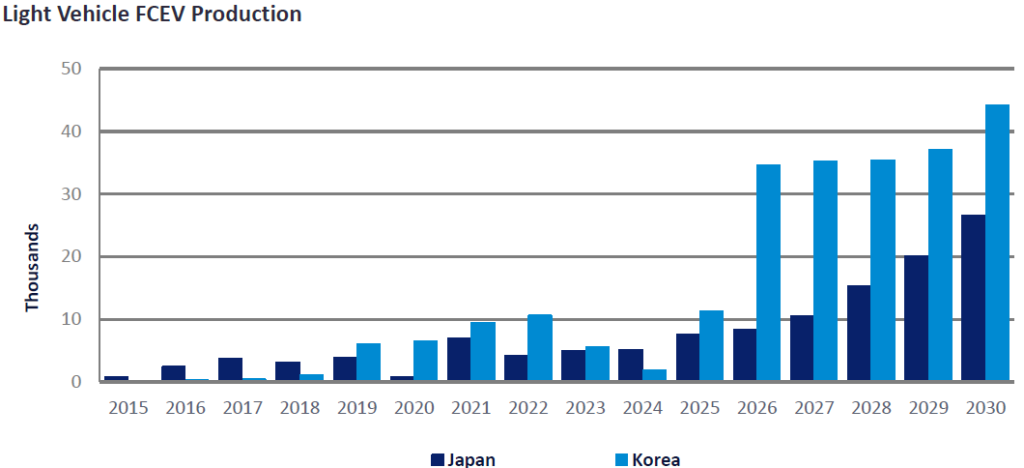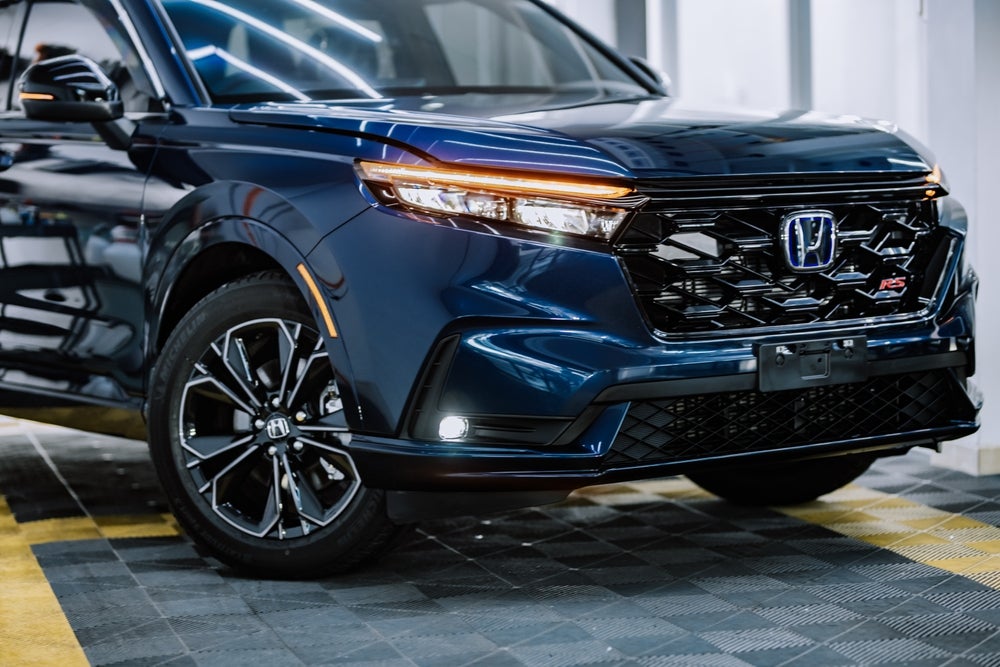The global automotive industry is undergoing a revolution toward zero-emission technology, and in Asia, Japan and South Korea are leading the race for dominance in hydrogen-powered vehicles. This rivalry is more than a market battle—it’s a bid for energy independence and environmental sustainability. FCEVs (fuel cell electric vehicles) offer several advantages over traditional fossil-fuel vehicles and even BEVs (battery electric vehicles), such as longer range and faster refuelling, making them a potentially transformative solution, especially for long-haul and heavy-duty applications.

Despite its promise, hydrogen technology faces obstacles like high production costs, limited infrastructure, and energy loss during hydrogen production. Japan and South Korea are working to overcome these barriers through significant investments and government support.
Japan’s Approach: Toyota’s Pioneering Vision
Japan was one of the earliest adopters of hydrogen technology. Toyota, the nation’s leading automotive giant, introduced the Mirai in 2014, making it one of the world’s first mass-produced hydrogen fuel cell vehicles. Toyota has doubled down on its hydrogen vehicle research, investing billions in fuel cell technology for passenger and commercial vehicles. Toyota is also exploring hydrogen applications beyond fuel cells, such as hydrogen combustion engines, exemplified by the Corolla Cross H2 Concept, which provides a familiar driving experience with reduced emissions. At the Japan Mobility Show in October 2024, Toyota unveiled a compact, portable hydrogen tank system that simplifies refuelling, signalling the potential for more compact and efficient hydrogen vehicles.
Along with Toyota, other Japanese automakers such as Honda, have also entered the hydrogen market. Although Honda previously offered the Honda Clarity FCEV, which was discontinued in 2021, the company is now revitalising its hydrogen strategy. Partnering with General Motors, Honda is focused on developing cutting-edge fuel cell systems and new FCEV models, including the recently launched CR-V e:FCEV for the U.S. and Japanese markets, reaffirming its dedication to hydrogen technology.
Japan has also placed significant emphasis on building hydrogen infrastructure. Supported by government policies and subsidies, Japan has prioritised expanding its hydrogen infrastructure, aiming to establish 1,000 refuelling stations and increase hydrogen supply to three million tons per year by 2030.

US Tariffs are shifting - will you react or anticipate?
Don’t let policy changes catch you off guard. Stay proactive with real-time data and expert analysis.
By GlobalDataSouth Korea’s Strategy: Hyundai’s Global Ambitions
South Korea has responded to Japan’s lead in hydrogen technology by accelerating its own hydrogen ambitions, with Hyundai at the forefront. Since launching the Nexo FCEV in 2018, Hyundai has committed billions to establishing itself as a global leader in hydrogen-powered vehicles by 2030, supported by the South Korean government. In October 2024, Hyundai unveiled its third-generation hydrogen fuel cell concept vehicle, the INITIUM, which boasts a targeted range of over 650 kilometres and a maximum motor output of 150 kW. Hyundai aims to bring a production model based on the INITIUM to market in early 2025, setting new benchmarks in efficiency and performance for hydrogen-powered vehicles.
The South Korean government has ambitious plans to expand the domestic hydrogen ecosystem, aiming to build over three hundred hydrogen refuelling stations by 2025 while exploring hydrogen fuel applications in public transportation and industry. Hyundai has invested in fuel cell production facilities, with plans to supply these systems to other manufacturers and industries worldwide. Beyond automotive applications, South Korea’s strategy includes exporting hydrogen technology globally.
Hyundai has already deployed several hydrogen trucks in Europe, highlighting its focus on commercial vehicles, where hydrogen is especially suitable for heavy-duty and long-range applications. This aligns with South Korea’s national Green New Deal, a policy framework aimed at achieving carbon neutrality by 2050.
Competitive Advantages and Future Outlook
Despite progress, challenges remain for both countries. The high cost of hydrogen production, the scalability of refuelling infrastructure, and the expense of fuel cell systems pose significant hurdles. Additionally, hydrogen technology must contend with the rapid advancement of BEVs, which are currently more widely available and benefit from more established infrastructure.
Japan currently leads in FCEV infrastructure, while South Korea, driven by Hyundai’s strong export focus and success in commercial vehicles, holds an advantage internationally. South Korea’s output, projected to reach 44k units by 2030 compared to Japan’s 27k units, reflects Hyundai’s momentum in the market. Both countries face challenges, including high production costs and competition from BEVs, but they are also exploring green hydrogen and expanding global partnerships to develop an international hydrogen supply chain.
As both nations accelerate their hydrogen investments, this competition is driving innovation and global interest in hydrogen-powered vehicles. Though the ultimate leader remains uncertain, Japan and South Korea’s rivalry promises a major shift toward sustainable transportation, with significant implications for the automotive industry and environmental sustainability worldwide.

Kunat Tharasrisuthi, Manager, Asia Powertrain Forecast
This article was first published on GlobalData’s dedicated research platform, the Automotive Intelligence Center.




